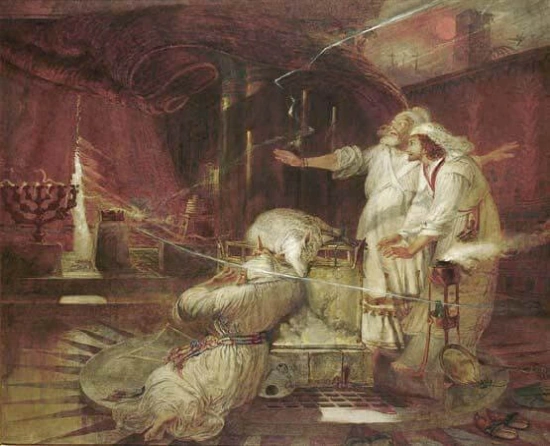393. And he was given much incense, that he should offer it for the prayers of all the saints upon the golden altar which was before the throne. This symbolizes a propitiation, lest angels of the Lord's spiritual kingdom be harmed by the spirits of the satanic kingdom situated below.
The incense and golden altar symbolize worship of the Lord springing from a spiritual love (nos. 277, 392). Prayers symbolize those expressions of charity and so of faith that are found in worship (no. 278). And saints mean people who are of the Lord's spiritual kingdom, while the just or righteous are those of His celestial kingdom (no. 173). It can be seen from this that people in the Lord's spiritual kingdom are the subject here.
The much incense here, given for the prayers of all the saints upon the golden altar, symbolizes a propitiation lest the angels be harmed by the spirits of the satanic kingdom situated below, because incense was used for propitiations and expiations, especially when dangers threatened - as can be seen from the following:
When the congregation murmured against Moses and Aaron and they suffered a plague, Aaron took fire from the altar, put incense in the censer, and ran between the living and the dead to make atonement, and the plague was stopped. (Numbers 16:42-50)
The altar of incense also was placed in the Tabernacle in front of the mercy seat upon the ark, and incense was offered on it every morning when they trimmed the lamps. (Exodus 30:1-10)
Moreover, Aaron was commanded to offer incense whenever he entered inside the veil, and a cloud of incense would cover the mercy seat, lest he die. (Leviticus 16:11-13)
It can be seen from this that in the representational Israelite Church, propitiations were made with the burning of incense. So, too, here, lest the angels be harmed by the satanic spirits living below.








